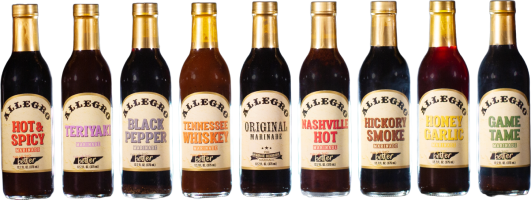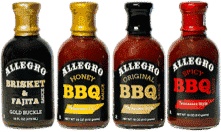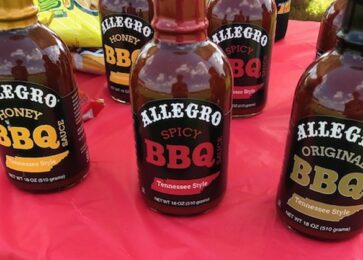Cooking Methods: How To Choose The Right Method For Every Type Of Meat

Methods of cooking meat
The two basic methods of cooking meat are moist heat and dry heat.
Which cuts of meat are best for moist heat cooking?
Selecting the proper cooking method for the cut of meat is important. Less tender cuts of meat require moist heat cooking methods to help break down the tough connective tissues, add moisture to the meat, and cook the meat slowly over a long time. Since more tender cuts of meat do not require moisture and long, slow cooking, they are usually cooked with a dry heat method.
The method chosen to cook a certain cut of meat should relate directly to the inherent tenderness of that cut.
Looking to elevate flavor before you even start cooking? Check out these easy ways to use marinade for maximum taste.
Tenderness is determined by:
- Where on the animal the meat come from
- The degree of marbling
- The age of the animal
- How the meat was stored
- How the meat was prepared for market
In general, cuts from the loin section are the most tender; the farther away from this section, the less tender the meat will be.
Dry Heat cooking methods
Roasting
Roasting is a cooking method in which meat is surrounded and cooked by heated air, usually in an oven. Meat is not covered and no water is added.
Broiling
Broiling is cooking by direct heat from a flame, electric unit, or glowing coals. Meat is cooked one side at a time. Choose tender beef steaks, lamb chops, cured ham slices, and bacon for broiling. Use steaks or chops cut 1 to 2 inches thick. If steaks or chops are less than 1 inch thick, pan broil them. Consult the manufacturer’s instructions for broiling since equipment varies. Usually the door is left open when broiling in an electric range and closed when broiling in a gas range.
Grilling
The technique we call grilling is thought to have originated in the Caribbean, where natives smoke-dried meat over hot coals on wood-frame “grills? Early Spanish explorers called this the “barbacoa” which evolved into the modern-day word “barbecue.” Due to the method of heating, grilling is actually a method of broiling. Meat can be grilled on a grid or rack over coals, heated ceramic briquettes or an open fire. While it is usually done outdoors, grilling can be done in the kitchen with special types of range tops or small appliances. Here’s a handy checklist of things to bring to a BBQ.
Pan broiling
Pan-broiling is cooking in an uncovered pan over direct heat. Fat that cooks out of the meat is drained off.
Pan-frying
Pan-frying is similar to pan-broiling, except that meat is cooked in a small amount of fat. The easiest way to tell when steaks and small pieces of meat are done when you broil, pan-broil, or panfry is to make a small cut in the meat near the bone and check the interior color.
Stir-frying
Stir-frying is similar to panfrying except that the food is stirred almost continuously Cooking is done with high heat, using small or thin pieces of meat.
Deep-fat frying
When meat is cooked immersed in fat, the process is called deep-fat frying. This method is only used with very tender meat. Usually, meat to be deep-fat fried is coated with egg and crumbs or a batter, or it is dredged in flour or corn meal (breaded). This method of cooking is sometimes used for brains, sweetbreads, liver and croquettes; however, a number of other meat products are suitable for deep-fat frying.
Moist Heat cooking methods
Braising
Braising is cooking in steam trapped and held in a covered container or foil wrap. The source of the steam may be water or other liquid added to the meat, or it may be meat juices. Large, less tender cuts, such as chuck, round, and rump, are braised as pot roasts.
Cooking in liquid
This method involves covering a less tender cut of meat with liquid and simmering in a covered kettle until tender and well-done. Care should be taken not to let the temperature of the liquid exceed 195°F, because boiling (212°F) toughens meat protein. When the liquid is used as a base for soup it is called meat stock (also called broth or bouillon). Meat that is partially cooked in liquid before cooking by another method is called “parboiled.”
The three ways to cook in liquid are simmering, stewing and poaching. Simmering and stewing are used for less tender cuts of meat while poaching is used for tender cuts. Also, poaching is only appropriate for beef while any type of meat (beef, veal, pork or lamb) can be simmered. The difference between simmering and stewing is that simmering is used with whole cuts of meat while stewing is used with small pieces of meat.
Poaching has been a traditional way of cooking poultry and fish. However, beef roasts can also be successfully poached if they come from tender cuts. Appropriate roasts for poaching are beef eye round, rib eye and tenderloin.
Explore our mouth-watering Allegro Recipes to find the perfect meal to create for any occasion by clicking on any of the links below:
The information found in this Allegro Marinades article was compiled from the following articles:
http://www.four-h.purdue.edu/foods/cooking%20meat%20and%20poultry.htm
https://meatscience.org/TheMeatWeEat/topics/meat-safety/meat-cookery
Frequently Asked Questions About Cooking Meat
Chicken can be cooked using various methods, but grilling and baking are popular for their ability to retain moisture and flavor. Grilling gives a smoky flavor, while baking ensures even cooking.
Choose a marinade based on the cut of beef and the desired flavor profile. For tougher cuts, use acidic marinades to tenderize the meat. For premium cuts like ribeye, opt for savory or herb-based marinades to enhance the natural flavors.
Pork can be versatile. Roasting is excellent for larger cuts like loin or shoulder, providing a crispy exterior and tender interior. For chops, grilling or pan-frying are quick and effective methods.
Yes, you can use the same marinade for different meats, but adjust the marination time. For example, chicken may only need a few hours, while beef could benefit from overnight marination.
Slow cooking breaks down tough fibers and collagen in the meat, resulting in tender, flavorful dishes. It’s ideal for cuts like brisket, pork shoulder, and stews.
Marination time varies by meat type and cut. Generally, marinate chicken for 2-4 hours, beef for 6-24 hours, and pork for 4-8 hours. Avoid over-marinating to prevent a mushy texture.
Interested in mastering one of our most popular flavors? Learn everything about cooking with teriyaki marinade.
Grilling uses direct heat from below, imparting a smoky flavor and char marks. Broiling uses high heat from above, similar to grilling but without the smoke, making it suitable for indoor cooking.
Only reuse marinades if they have been boiled to eliminate bacteria. Alternatively, set aside a portion of the marinade before adding raw meat to use as a sauce later.
Delicate meats like fish are best cooked using gentle methods such as poaching, steaming, or baking to preserve their texture and flavor without drying out.
To prevent drying, use methods like marinating, basting, or cooking with moisture (braising or slow cooking). Also, avoid overcooking by using a meat thermometer to ensure precise doneness.








